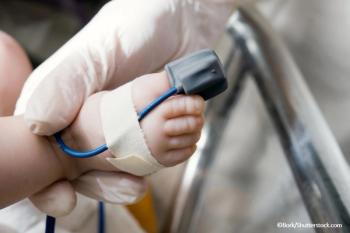
NHL Risk Increases With Hepatitis C Infection
HOUSTON -- Patients with hepatitis C virus infection may have a 20% to 30% increased risk of developing non-Hodgkin's lymphoma, researchers here reported.
HOUSTON, May 8 -- Patients with hepatitis C virus infection may have a 20% to 30% increased risk of developing non-Hodgkin's lymphoma, researchers here reported.
HCV, which causes lymphoproliferation, also produced a threefold higher risk of Waldenstrm macroglobulinemia, said Thomas P. Giordano, M.D., M.P.H., of the. DeBakey VA Medical Center, and colleagues at the National Cancer Institute.
The risk for cryoglobulinemia was also elevated for patients with HCV infection, showed results of a large retrospective VA cohort study reported in the May 9 issue of the Journal of the American Medical Association.
Cryoglobulinemia is characterized by ciruculation of certain plasma cell produced immunoglobulins and complement components which precipitate upon refrigeration of serum and plasma.
There was also an increased risk for MGUS (monoclonal gammopathy of undetermined significance), which has a predilection for the development of multiple myeloma or a related malignancy at the rate of 1% per year. However, the association with MGUS was not significant in adjusted regression models.
Lymphoproliferation induced by HCV may occur due to binding of the virion to receptors on the surface of B lymphocytes, which might lower their threshold for antigen response or induce DNA mutations, the researchers said.
The findings emerged from VA records from 1997 to 2004, which included 146,394 patients infected with HCV who had at least two visits with a diagnostic code for HCV infection, and from records of 572,293 uninfected patients.
For each HCV-infected patient, up to four uninfected patients were selected from all veterans, matched for age, sex, and baseline visit date and type (inpatient or outpatient). Those with HIV were excluded. Patients' mean age was 52, and 97% were men.
Of the HCV-infected patients, 1,359 developed non-Hodgkin's lymphoma, 165 developed Waldenstrm macroglobulinemia, and 551 developed the plasma-cell disorder cryoglobulinemia (adjusted hazard ratio [HR], 1.28; 95% confidence interval 1.12-1.45; HR, 2.76; CI, 2.01-3.79; and HR, 3.98; CI, 3.36-4.72; respectively).
The risk for the plasma-cell-disorder asymptomatic monoclonal gammopathy of undetermined significance (MGUS) was also increased, although the association was not significant in adjusted regression models.
There were no significantly increased risks for other hematological malignancies, the researchers reported.
Although the thyroiditis risk was slightly increased (HR, 1.06, CI, 1.01-1011), the risk for thyroid cancer (n=320) was not (HR, 0.72; CI, 0.52-0.99).
Adjusted P values for non-Hodgkin's lymphoma, Waldenstrm macroglobulinemia, cryoglobulinemia, and thyroiditis were all
Dr. Giordano and his colleagues said that although the clinical significance of these findings is unknown, it is possible that screening individuals infected with HCV could identify conditions suitable for early intervention, including chemoprevention trials for premalignant disease.
Newsletter
Enhance your clinical practice with the Patient Care newsletter, offering the latest evidence-based guidelines, diagnostic insights, and treatment strategies for primary care physicians.






















































































































































































































































































